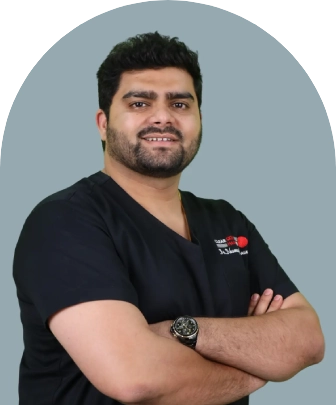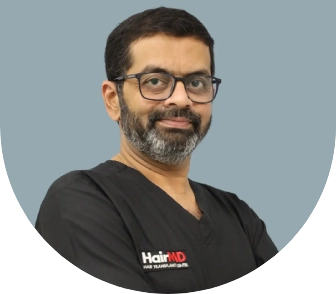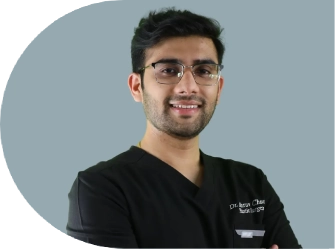Types of Acne Scars: Treatments For Each Kind Of Scarring
Reviewed By: Dr. Dhanraj Chavan
Updated on: 16th October, 2025

Acne scars can be a real pain, and chemical treatments can seem scary without a doctor’s advice. But don’t worry! There’s a natural solution you can try at home.
This article will show you how aloe vera can help fade acne scars. We’ll also share easy natural recipes to get clearer, smoother skin, naturally.
Table Of Content
- Why Do Acne Scars Happen?
- How to Treat Acne Scarring?
- Different Types of Acne Scarring and Treatments
- How To Treat Atrophic Scarring?
- Why Choose Clear Skin?
- FAQ
- Conclusion
Why Do Acne Scars Happen?
Acne scars occur when the skin attempts to heal itself after an acne breakout, but the process doesn’t always go smoothly. When pimples form, the skin becomes inflamed, and the tissue underneath can be damaged. This inflammation triggers the body’s natural healing process, which involves producing collagen. However, if too little or too much collagen is produced, it can lead to scarring.
There are two main types of acne scars: atrophic and hypertrophic. Atrophic scars are depressions in the skin and are caused when not enough collagen is produced during healing. These are common with conditions like cystic acne. On the other hand, hypertrophic scars are raised and occur when the body produces too much collagen, creating a bump over the skin.
Other factors can also contribute to acne scars, such as picking or popping pimples, which aggravates the skin and increases the chances of scarring. Genetics also play a role, as some people are more prone to scarring than others. Additionally, severe or prolonged acne can increase the likelihood of scars forming.
Understanding why acne scars happen is the first step to finding effective treatments, helping you restore smoother, healthier-looking skin.
How to Treat Acne Scarring?
Acne scars are usually caused when you pick or squeeze your acne. The number 1 rule of dealing with acne is never to touch it. But if we pick or squeeze it, it tends to leave a mark or scar. Acne should be left to heal completely on its own. Usually, they leave red or light brown marks upon healing, and the pigmentation heals gradually.
As there are different types of acne, there are also different types of scarring. Acne scarring depends on the type of acne one has and how it gets treated. It can be shallow or deep; it depends solely on the type of acne.
Different Types of Acne Scarring and Treatments
Atrophic Scars: Atrophic acne scars are generally caused because of cystic acne. They are shallow and flat in appearance. There are three types of atrophic scars.
Types Of Acne Scars And How To Treat Them | ClearSkin, Pune | (In HINDI)
Icepick scars:
These are deep, narrow, and often appear as small, sharp indentations that resemble punctures made by an ice pick. They extend deep into the skin’s dermis, making them one of the most challenging types of acne scars to treat effectively.
Boxcar scars:
Characterized by their U-shaped depressions with sharp, well-defined vertical edges, these scars often look like chickenpox scars. They can be shallow or deep and typically appear on the temples and cheeks, where the skin is thicker.
Rolling scars:
These scars give the skin a wavy or uneven texture, creating a “rolling” appearance. They are broad, shallow indentations with smooth, sloping edges, resulting from damage to the deeper layers of the skin, pulling it down and creating an undulating surface.
Hypertrophic scars:
These are raised, firm, and often pink or reddish bumps that remain within the boundaries of the original acne lesion. They occur when the skin produces too much collagen during the healing process.
Keloid scars:
Similar to hypertrophic scars, keloids are also raised and firm, but they are generally larger, growing aggressively beyond the borders of the original acne spot. They can be itchy, painful, and tend to recur even after treatment.
Post-inflammatory hyperpigmentation (PIH):
While not true scars in the sense of textural changes, PIH refers to flat, discolored spots that are left behind after acne lesions heal. These spots can range in color from red or pink to purple, brown, or black, and are caused by an overproduction of melanin in response to inflammation.
How To Treat Atrophic Scarring?
When it comes to treating atrophic scarring, a two-step method is usually followed. The first step focuses on how to even out the skin, and the second one is to reduce or finish any discolouration due to scarring.
Step 1:
A dermal treatment is required to even out the skin from the scars that have left a deep dent on your skin. The main kinds of treatments are:
- Laser Therapy:
Laser therapy helps stimulate the production of collagen in the inner skin with the help of high-voltage light.
- Chemical Peels:
This treatment is ideal for shallow scarring. It uses salicylic acid or glycolic acid on your skin. It removes the outer layer of the skin, which evens out the skin.
- Dermabrasion:
This treatment best suits boxcar scars as it removes the top layer of skin with a tool called “Sand Down.” It makes the boxcar scar shallow.
- Punch Grafting:
It works best for deep and dark scars as it erases the scar from the area and replaces it with a layer of the skin taken from another part of the body.
- Dermal Fillers:
In this treatment, chemicals like hyaluronic acid or calcium hydroxylapatite are injected into the skin to make it appear even.
Most Effective Laser Treatment For Acne Scars(Acne Scars के लिए सबसे प्रभावी लेज़र उपचार)| (In HINDI)
Step 2:
s is a follow-up to step 1. To attain even skin with no discolouration, a proper skincare regime must be followed. This includes:
- Using chemical exfoliators
- Using sun protection creams
Postinflammatory Hyperpigmentation:
There are two reasons behind hyperpigmentation— number 1 – when you pick or squeeze your scar and number 2 – a darker skin.
These scars heal gradually with time. The discolouration can be treated by following a proper skincare regime and protecting the skin from direct exposure to the sun.
You can also see your dermatologist. A dermatologist usually recommends:
- Chemical exfoliators
- Laser therapy
- Retinols that accelerate the production of collagen that even out skin complexes.
Hypertrophic & Keloid Scars:
This type of scarring occurs when a raised lump of scar tissue forms in place of the previous acne. They could be the same size as the acne once was or bigger.
Hypertrophic acne scars usually result from back acne, and acne on the chest, jawline, and shoulder. People with darker skin types usually suffer from this kind of acne scarring.
Keloid and hypertrophic scars treatment usually focuses on making the skin even and removing the raised lump of scar tissue.
Thus, the treatment includes:
- Laser therapy
- Surgical treatment
- Infuses the steroids in the scar as it softens the lump. With regular injections, it can be reduced to nearly nothing.
You can also go for less aggressive treatments like:
- Regular Massaging: By doing this, the scar tissues are softened. You can use bio-oil.
- Silicone Sheeting: This is also used to soften the scar tissue by applying silicone sheets on them.
Acne and the scars they leave behind can be treated using home remedies, or you can seek professional help from your dermatologist. Scarring is the aftermath of acne, especially facial acne scar. But before applying anything to your face, you should see your dermatologist as every skin type is different and requires unique care.
Why Choose Clear Skin?
Our team of skin experts working with world-class tools and devices can give you the right diagnosis and treat your skin problems. Using new-age technology and expertise, we understand the problem areas and recommend the necessary treatments accordingly.
If your breakouts and scars are getting worse, and none of the home remedies are working, book a consultation with us right away.
Why Choose Clear Skin?
Q1. What are the main types of acne scars?
There are two main types of acne scars — depressed (atrophic) and raised (hypertrophic or keloid). Depressed scars include ice-pick, boxcar, and rolling scars, while raised scars appear as thick bumps on the skin.
Q2. Why do acne scars form?
Acne scars form when deep pimples damage the skin and collagen. If too little collagen forms, scars become depressed; if too much forms, they become raised.
Q3. How can depressed acne scars be treated?
Depressed scars are treated using laser therapy, chemical peels, microneedling, or subcision to smooth the skin and boost collagen production.
Q4. How are raised acne scars treated?
Raised scars or keloids are treated with steroid injections, laser sessions, cryotherapy, or silicone gels to reduce thickness and flatten the skin.
Do You Know?
Roughly 250 Patients Are Treated
Everyday By These Dermatologists
(You are one click away from flawless skin)
Meet Our Dermatologist!
Conclusion
Understanding the various types of acne scars is crucial for selecting the most effective treatment. Whether dealing with atrophic, hypertrophic, or keloid scars, there are tailored solutions to help improve your skin’s appearance. Consulting with a dermatologist can provide personalized advice and treatment plans. By addressing each type of scarring appropriately, you can achieve clearer, smoother skin and boost your confidence.
Further Reading
Best Acne Scar Treatments in Pune: Laser vs Chemical Peel
Confused between laser and chemical peel for acne scars? Discover which acne scar treatment in Pune suits your skin best at Clear Skin Clinic.
Does Kajal Cause Dark Circles?
Not all dark circles come from kajal. Know the real causes, dermatologist advice, and proper makeup removal methods to protect your eyes.
Best Age for Anti-Ageing Treatments
Understand when to start anti-ageing treatments. Expert skincare guide for your 20s, 30s, and 40s from Clear Skin dermatologists in Pune.
The Role of Oxygen Skincare in Achieving Healthy Skin
Oxygen skincare boosts hydration, collagen, and glow. Discover how ClearSkin’s oxygen facials help you achieve fresh, radiant, healthy-looking skin.
Have thoughts? Please let us know
We are committed not only to treating you, but also educating you.





